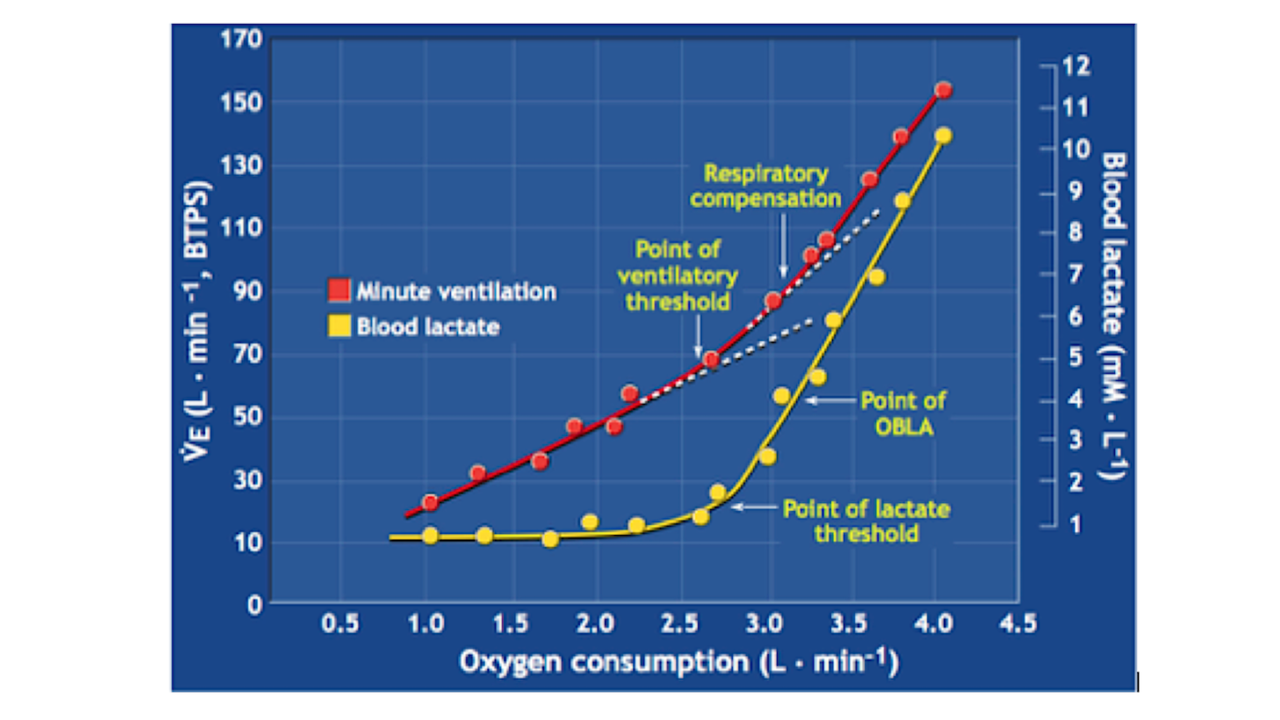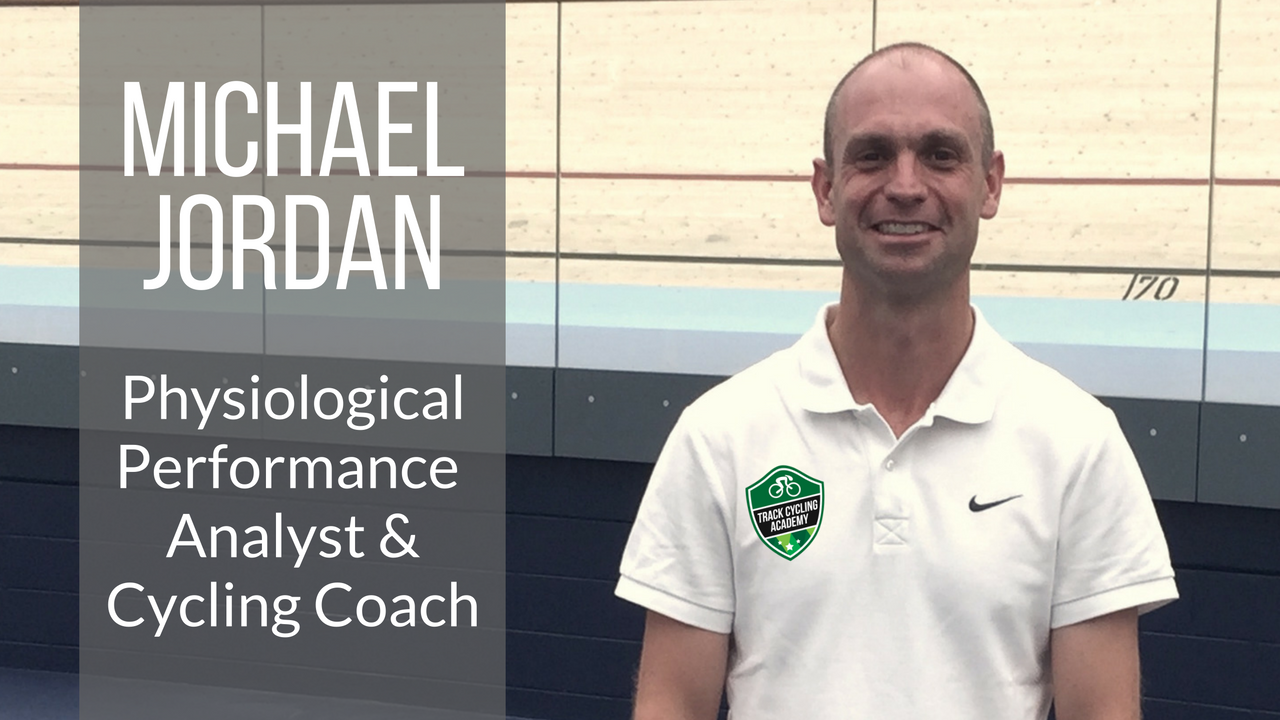Understanding Lactate for Track Cyclists

Michael Jordan here, the Track Cycling Academy's Physiological Performance Analyst.
Now here is a lovely graph. What does it tell us?

More than we ever need to know! But I like it a lot!
This graph, to me, is the basis of a lot of physical training theory. OK, there are so many more lines that you could plot on here. But then you’d have clutter.
My job with the Track Cycling Academy is to take something extraordinarily complex and to make this simple, so that you can go in to a session focused on executing the job, and not worrying about all the other combinations of session you could be doing.
Here’s another thought...
Before we begin talking about our graph:
- You eat food, which represents your energy.
- You process the energy to fuel.
Let me take a direct quotation from my favourite Exercise Physiology textbook, which is McArdle, Katch and Katch. My 2016 edition arrived in March 2016. This, to me, is really exciting. I haven’t been to a cinema in 10 years. I am not like most people.
Anyway, the quotation:
‘The anaerobic and aerobic breakdown of ingested food nutrients provides the energy source to synthesize the chemical fuel that powers all forms of biologic work’.
I say biological as I’m British, but who cares. That sums it up. The graph is from that book too. There are loads of similar ones online. Just google image 'OBLA graph'.
So, on the left we have the amount you breathe in and out. On the bottom is how much oxygen you are taking out of the breathed in air for usage. On the right is blood lactate. If you know the words ‘lactic acid’, for today, that’ll do.
This graph could be your graph of one of your efforts. It could be a test on a bike where you are increasing the wattage every short while. You could go from 50 to 100 to 150 watts without making many changes to your body. You’d need to use a bit more oxygen to power a bit more work. Your breathing would get deeper though not necessarily faster. So then you are up to 200 watts, 250 watts… all these numbers are different for different people. You hit the point of lactate threshold. This is where your body is accumulating more lactate than it is removing because, in really simple terms, you are asking the body to produce more power than the aerobic system can provide.
As we move up the yellow line we see that at 4mM per litre, meaning the concentration of lactate in the blood, you have reached a point of OBLA. Onset of blood lactate accumulation.
Once this heads above 4 it is hard to control without reducing intensity. So what would happen if you started to get a major pain from lactate (OK, so the lactate itself may not be the thing causing pain – it doesn’t matter what it is, you are in pain and riding slower than you want!) half way through a 3km pursuit? Your second half will be slower.
Even at the same wattage output this lactate will still accumulate, so in a road ride hanging on to the last wheel of a steady speed pack gets seemingly harder. Or, you could be holding your cadence on a track bike on lap 10 and 11 is getting more difficult.
So what do we need to do?
We need to look at physiology and relate this to our training.
‘OBLA normally occurs between 55% and 65% of V02max in healthy, untrained subjects and often equals more that 80% V02 max in highly trained endurance athletes’ says my textbook.
Marathon runners and cross country skiers have a high OBLA point. Who were 1st and 2nd at the Olympics in the men’s Omnium? Two riders with massive mileage in their legs yet we still term them ‘sprinters’.
Have a look at Mark Cavendish’s 4km pursuit time in that Omnium. Have a look at the world record for the 4km men’s pursuit.
These are road riders who can put out a lot of power below that OBLA point. Their start in a pursuit will use massive amounts of that ATP-CP system and be primary fuelled anaerobically. So it will produce a lot of lactate, surely!? Yes, but they will have developed buffers which stop that acid accumulating so quickly.
How do they do that?
By training going above and below lactate threshold. They also need to develop power – and remember that is energy divided by time. A rapid pedal stroke is surely better than a slow one?! – to get them off the start line quickly.
So there we are… in training, do everything… OK that doesn’t help you.
Develop and maintain a good aerobic system. Even if you don’t really use it much in a flying 200m you’d need to be able to get rid of lactate effectively and be as fit for your last sprint as your first.
Doing sessions, let’s say 1hr on an undulating road, learning to let your body get in to oxygen debt on the up-slopes to then pay back that debt on the descents will help develop the buffers to the acid build up.
And practice your starts.
How far can you get in 6 seconds, 10 seconds, 15 seconds and 30 seconds? By 30 seconds that aerobic and lactate threshold training will now be paying dividends. You’ve worked for it!
As all things, it is all individual, but the science has given us a really good mapped outline to follow and it’s a fascinating, and rewarding journey.
Blog written by Michael Jordan
Phyiological Performance Analyst
Track Cycling Academy


